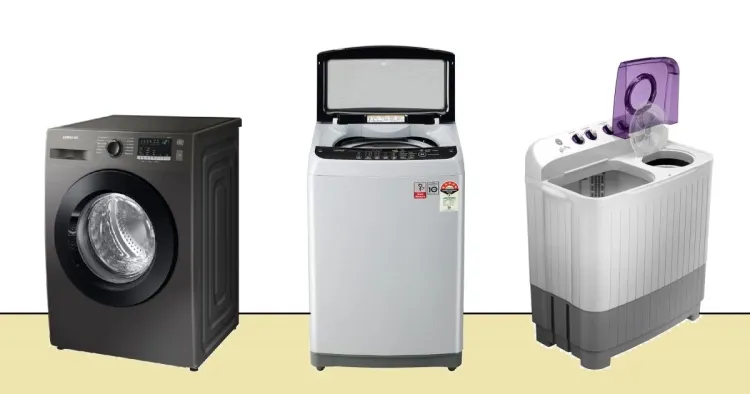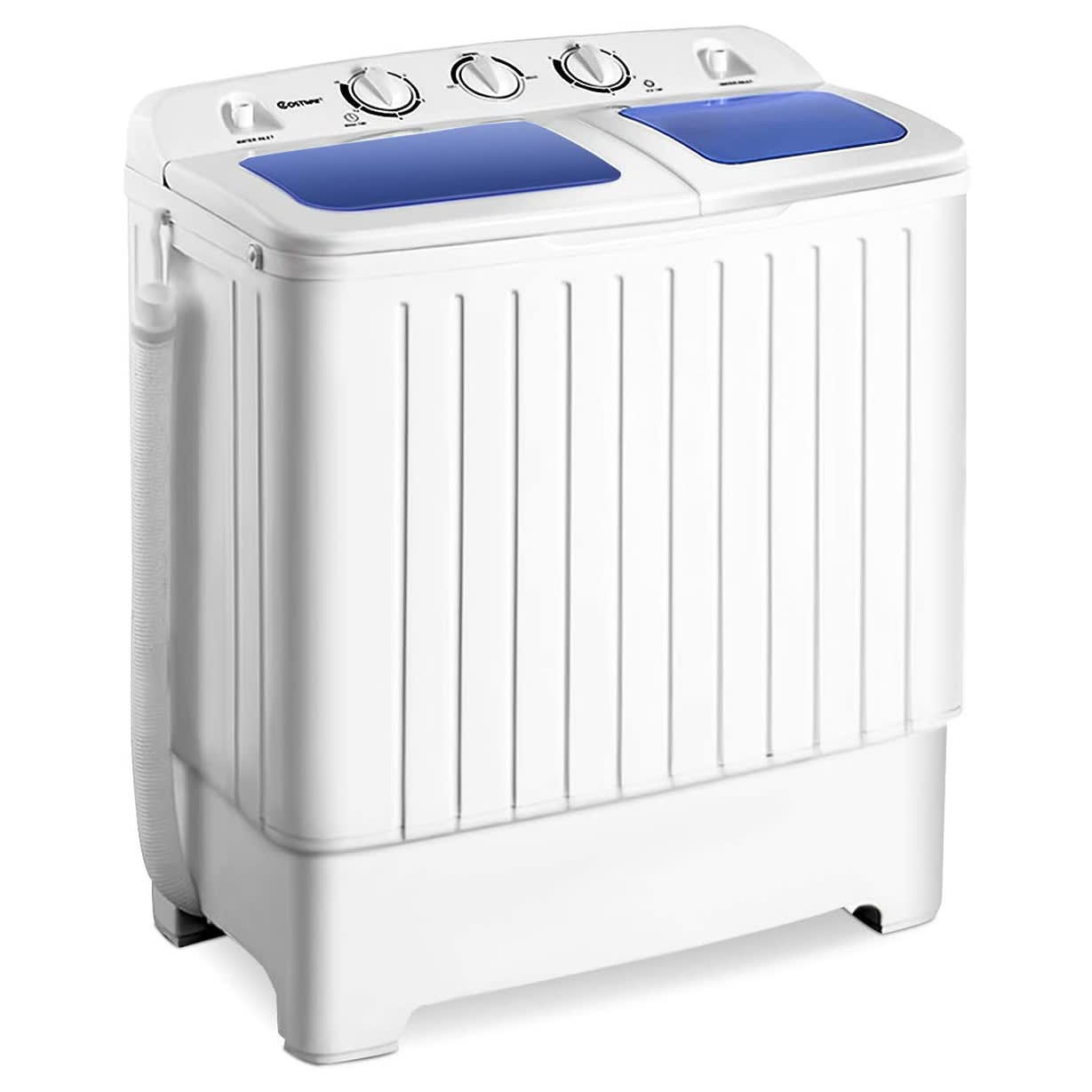A Comprehensive Guide to Washing Machines: Types and Uses...!!!
Washing machines have become indispensable appliances in modern households, offering a range of types and features to suit different needs and preferences. From top-loading and front-loading machines to semi-automatic and fully automatic models, there is a washing machine for every requirement.

Introduction to Washing Machines
Washing machines are essential household appliances designed to efficiently clean clothes and textiles. They have revolutionized the laundry process, saving time and effort. Over the years, different types of washing machines have been developed, each offering unique features and benefits to cater to diverse needs and preferences.
Types of Washing Machines
Several types of washing machines are available, each designed to meet specific requirements. Here are the most common types:
1. Top-Loading Washing Machines
Top-loading washing machines feature a lid on the top for loading clothes. They are popular for their simplicity and user-friendliness. Key features include:
-
Agitator or Impeller: These machines typically have either an agitator (a central post with fins) or an impeller (a low-profile rotating hub) to move clothes during the wash cycle.
-
Ease of Access: Loading and unloading clothes is easy, as you don't need to bend down.
-
Quick Wash Cycles: Top loaders generally have shorter wash cycles compared to front loaders.
-
Budget-Friendly: They are usually more affordable than front-loading machines.
-
Higher Water Usage: Top loaders tend to use more water compared to other types.
2. Front-Loading Washing Machines
Front-loading washing machines have a door at the front for loading clothes. They are known for their efficiency and advanced features. Key benefits include:
-
Energy Efficiency: Front loaders are more energy-efficient and use less water compared to top loaders.
-
Gentle on Clothes: The horizontal drum design is gentler on clothes, reducing wear and tear.
-
Higher Spin Speed: Front loaders typically have higher spin speeds, resulting in drier clothes after the wash cycle.
-
Larger Capacity: They generally have a larger capacity, making them suitable for families.
-
Advanced Features: Many front loaders come with advanced features such as steam cleaning, delay start, and various wash programs.

3. Semi-Automatic Washing Machines
Semi-automatic washing machines are a hybrid between fully automatic and manual machines. They require some manual intervention but offer flexibility and control. Key characteristics include:
-
Two Compartments: These machines typically have two compartments – one for washing and one for spinning.
-
Manual Transfer: Users need to manually transfer clothes from the washing compartment to the spinning compartment.
-
Water Control: Users can control the amount of water used, making them suitable for areas with water scarcity.
-
Affordable: They are generally more affordable than fully automatic machines.
-
Durability: Semi-automatic machines are robust and have fewer electronic components, resulting in lower maintenance costs.
4. Fully Automatic Washing Machines
Fully automatic washing machines handle the entire washing process from start to finish with minimal user intervention. They come in both top-loading and front-loading designs. Key advantages include:
-
One-Touch Operation: Users can start the wash cycle with a single button press.
-
Automatic Functions: These machines handle everything from water filling, washing, rinsing, and spinning.
-
Advanced Features: Fully automatic machines come with various features such as multiple wash programs, temperature control, and smart technology.
-
Convenience: They offer maximum convenience and require minimal effort from the user.
-
Higher Cost: Fully automatic machines are generally more expensive than semi-automatic machines.
5. Portable Washing Machines
Portable washing machines are compact and lightweight units designed for small spaces or mobile use. They are ideal for apartments, dormitories, and RVs. Key features include:
-
Compact Size: Portable machines are smaller in size, making them easy to store and move.
-
Manual Operation: Some portable models require manual operation, while others are semi-automatic or fully automatic.
-
Flexibility: They can be connected to a faucet or used with a bucket of water.
-
Energy Efficient: Portable machines consume less energy and water compared to larger models.
-
Convenience: They are perfect for small loads and quick washes.

Uses of Washing Machines
Washing machines offer a wide range of uses and benefits, including:
-
Efficient Cleaning: They provide thorough and efficient cleaning of clothes and textiles, removing dirt, stains, and odors.
-
Time-Saving: Washing machines save time by automating the laundry process, allowing users to focus on other tasks.
-
Energy and Water Efficiency: Modern washing machines are designed to be energy and water-efficient, reducing utility bills and environmental impact.
-
Versatility: They can handle various types of fabrics and garments, from delicate items to heavy-duty work clothes.
-
Convenience: Washing machines offer convenience with features such as delay start, quick wash, and customizable wash programs.
-
Hygiene: They help maintain hygiene by thoroughly cleaning and sanitizing clothes, especially with features like steam cleaning and hot water washes.
Washing machines have become indispensable appliances in modern households, offering a range of types and features to suit different needs and preferences. From top-loading and front-loading machines to semi-automatic and fully automatic models, there is a washing machine for every requirement. Understanding the types and uses of washing machines can help you make an informed decision and enjoy the benefits of efficient and convenient laundry care.
What's Your Reaction?

















